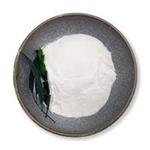NA-Selank Chemical Properties,Usage,Production
Description
Selank is a synthetic analog of the natural immunopeptide taftsin, belonging to a group of drugs of peptidic nature, and was developed at the Institute of Molecular Genetics of the Russian Academy of Sciences, in cooperation with the Zakusov Scientific Research Institute of Pharmacology. This peptide consists of the short fragment Thr-Lys-Pro-Arg of the heavy chain of the human immunoglobulin G and the tripeptide Pro-Gly-Pro at the end of the molecule, which provides metabolic stability and duration of action of the drug[2-3].Definition
Selank is a peptide anxiolytic drug which could recovers learning and memory impaired by damage of the noradrenergic (NA) brain system in Wistar rats after injection of the NA-synthesis inhibitor disulfiram, administration of neurotoxic compound 6-OHDA, or a combined induction of hypoxic hypoxia and hypercapnia. The main component of the Selank action is the stimulation of the search reflex aimed to distinguish an adequate adaptive response in the first trials of the learning session[1].Mode of action
Research have shown that Selank had a pronounced anxiolytic effect comparable to that of classical benzodiazepine drugs. It is known that the classical benzodiazepines act via gamma-aminobutyric acid (GABA) type A receptors. They enhance the GABA effect by allosteric modulation, which increases the frequency of opening of channels for chlorine ions. The Selank action mechanism may be related to its ability to affect the performance of the GABAergic system[2].References
[1] I I Kozlovski, et al. "[Compensatory effect of selank on the mnestic functions disturbed by neurotoxic damage of the noradrenergic system of the rat brain]." Eksperimentalnaia I Klinicheskaia Farmakologiia 71.2(2008):3.[2] Elena, Filatova , et al. "GABA, Selank, and Olanzapine Affect the Expression of Genes Involved in GABAergic Neurotransmission in IMR-32 Cells."Front Pharmacol 8(2017):89.
[3] N., et al. "Semax and Selank Inhibit the Enkephalin-Degrading Enzymes of Human Serum."Russian Journal of Bioorganic Chemistry (2001).
Preparation Products And Raw materials
NA-Selank Suppliers
Global(4)Suppliers
| Supplier | Tel | Country | ProdList | Advantage | ||
|---|---|---|---|---|---|---|
| +86-16632312509 +86-16632315022 |
saixinkeji@aliyun.com | China | 86 | 58 | ||
| +8618083322317 | 3391883138@qq.com | China | 878 | 58 | ||
| +86-17380623303 +86-17380623303 |
Caroline@youngshechem.com | China | 4802 | 58 | ||
| +86-18665676617 | China | 957 | 58 |
View Lastest Price from NA-Selank manufacturers
PROMPT×
PROMPT
The What'sApp is temporarily not supported in mainland China
The What'sApp is temporarily not supported in mainland China
Cancel
Determine
